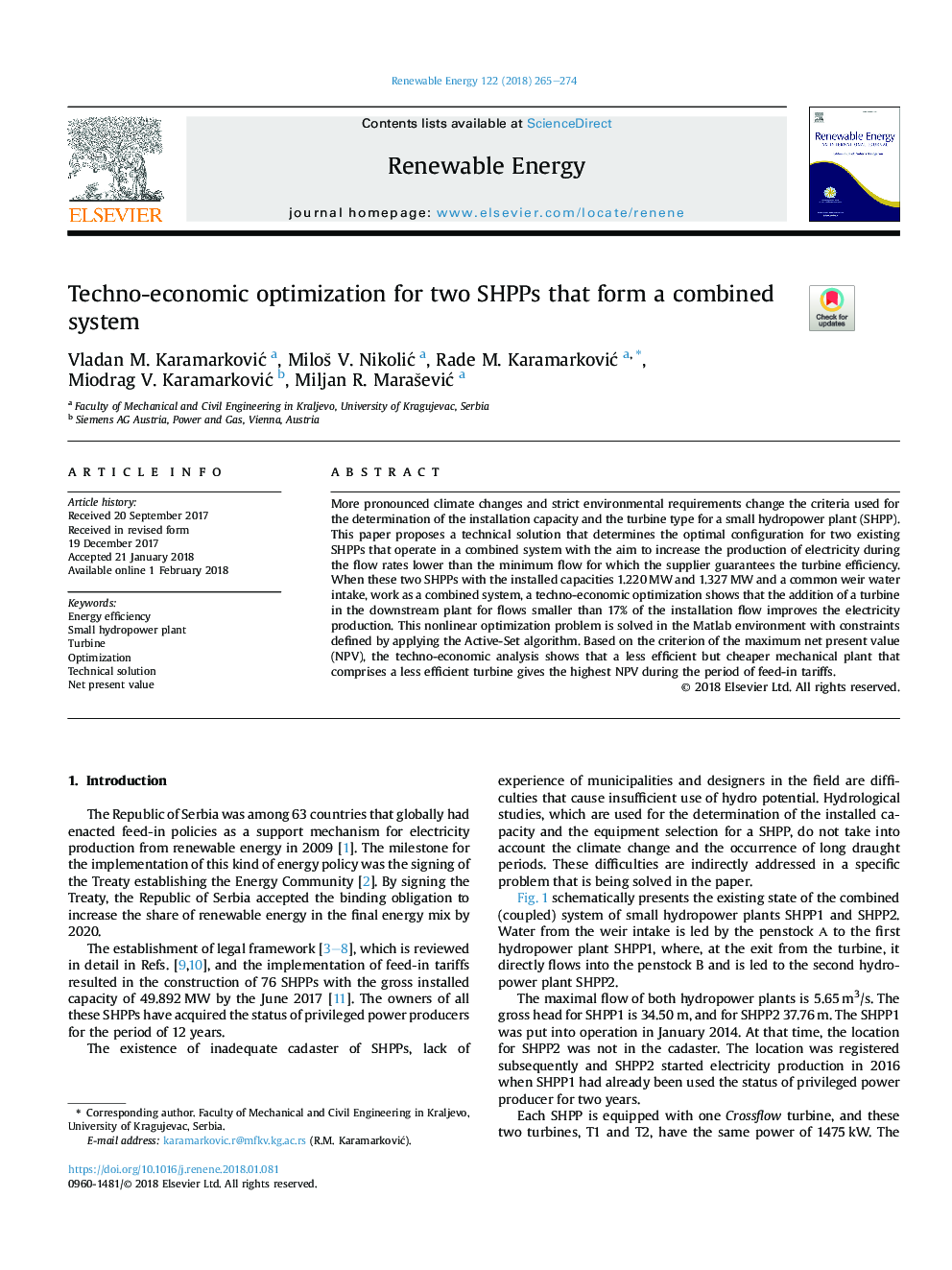| Article ID | Journal | Published Year | Pages | File Type |
|---|---|---|---|---|
| 6764612 | Renewable Energy | 2018 | 10 Pages |
Abstract
More pronounced climate changes and strict environmental requirements change the criteria used for the determination of the installation capacity and the turbine type for a small hydropower plant (SHPP). This paper proposes a technical solution that determines the optimal configuration for two existing SHPPs that operate in a combined system with the aim to increase the production of electricity during the flow rates lower than the minimum flow for which the supplier guarantees the turbine efficiency. When these two SHPPs with the installed capacities 1.220â¯MW and 1.327â¯MW and a common weir water intake, work as a combined system, a techno-economic optimization shows that the addition of a turbine in the downstream plant for flows smaller than 17% of the installation flow improves the electricity production. This nonlinear optimization problem is solved in the Matlab environment with constraints defined by applying the Active-Set algorithm. Based on the criterion of the maximum net present value (NPV), the techno-economic analysis shows that a less efficient but cheaper mechanical plant that comprises a less efficient turbine gives the highest NPV during the period of feed-in tariffs.
Related Topics
Physical Sciences and Engineering
Energy
Renewable Energy, Sustainability and the Environment
Authors
Vladan M. KaramarkoviÄ, MiloÅ¡ V. NikoliÄ, Rade M. KaramarkoviÄ, Miodrag V. KaramarkoviÄ, Miljan R. MaraÅ¡eviÄ,
